Computed tomography (CT) is used at a higher rate than ultrasound in children with developmental and cognitive impairments to diagnose appendicitis, even though CT scans increase radiation risk in smaller bodies.
Tag: Ultrasound
Researchers Demonstrate Fundamentally New Approach to Ultrasound Imaging
Researchers have demonstrated a new technique for creating ultrasound images. The new approach is substantially simpler than existing techniques and could significantly drive down technology costs.

Targeted ultrasound for noninvasive diagnosis of brain cancer
Brain tumors are typically diagnosed using MRI imaging, as taking a sample for a tissue biopsy is risky and may not be possible due to tumor location or a patient’s health. Researchers are developing a method to diagnose brain tumors without any incisions.
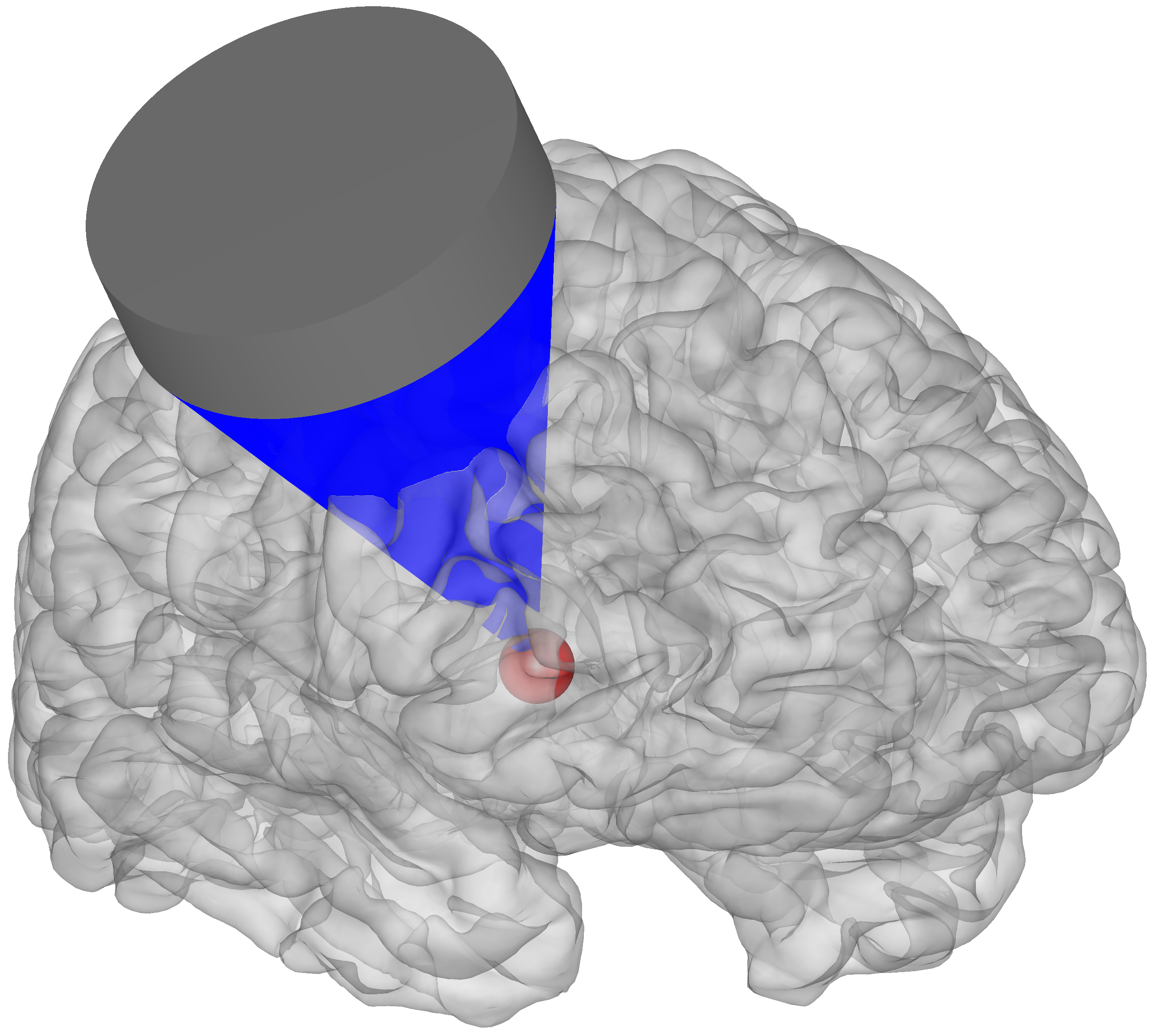
A sound treatment
University of Utah biomedical engineering assistant professor Jan Kubanek has discovered that sound waves of high frequency (ultrasound) can be emitted into a patient’s brain to alter his or her state. It’s a non-invasive treatment that doesn’t involve medications or surgery and has a unique potential to treat mental disorders including depression and anxiety and neurological disorders such as chronic pain and epilepsy.

A Novel Method to Precisely Deliver Therapeutics Inside the Body
A new way to deliver therapeutic proteins inside the body uses an acoustically sensitive carrier to encapsulate the proteins and ultrasound to image and guide the package to the exact location required.
Video — More Than Baby Debuts: Ultrasound Is Used To Deliver Drugs, Treat Tremors
Ultrasound is probably most associated with a parent’s first glimpse of a baby in the womb. However, a new video from the Acoustical Society of America showcases the technology’s abilities to do more than show images of our insides. This video is the second in a series celebrating the International Year of Sound.

Ultrasound-Assisted Molecule Delivery Looks to Preserve Blood for Years
Blood can typically be stored for only six weeks after donation, but a potential solution attempts to dry blood by using a sugar-based preservative. New work in ultrasound technology looks to provide a path to inserting these sugars into human red blood cells, allowing the molecule trehalose to enter the cells and prevent their degradation when dried for preservation. The researchers discuss their work in this week’s Biomicrofluidics.
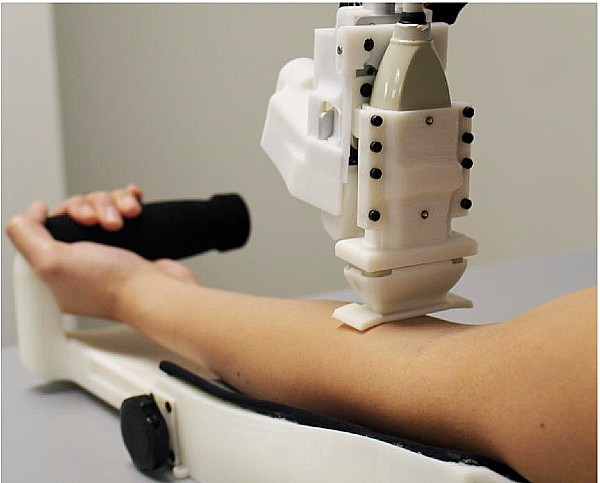
Robot designed to simplify blood draws
Bioengineers have created a blood-drawing robot that performed as well or better than technicians. The device could increase blood draw success from difficult- to-find veins and allow healthcare workers more time to treat patients.

Ultrasound Solves an Important Clinical Problem in Diagnosing Arrhythmia
Columbia Engineering researchers have used an ultrasound technique they pioneered a decade ago–electromechanical wave imaging (EWI)–to accurately localize atrial and ventricular cardiac arrhythmias in adult patients in a double-blinded clinical study. They evaluated the accuracy of EWI for localization of various arrhythmias in all four chambers of the heart prior to catheter ablation: the results showed that EWI correctly predicted 96% of arrhythmia locations as compared with 71% for 12-lead ECGs.

Physicists propose new filter for blocking high-pitched sounds
Need to reduce high-pitched noises? Science may have an answer. In a new study, theoretical physicists report that materials made from tapered chains of spherical beads could help dampen sounds that lie at the upper range of human hearing or just beyond.

Addition of MRI-Targeted Biopsy Leads to More Reliable Diagnosis of Aggressive Prostate Cancer
Using a combination of magnetic resonance imaging (MRI) to target and sample suspicious prostate tissue, along with a standard prostate biopsy, is significantly more likely to detect the most aggressive prostate cancers than standard biopsy alone. This finding, published today in the New England Journal of Medicine, could allow a higher percentage of prostate cancer patients to avoid unnecessary treatment for slow-growing prostate cancers that are not likely to spread.
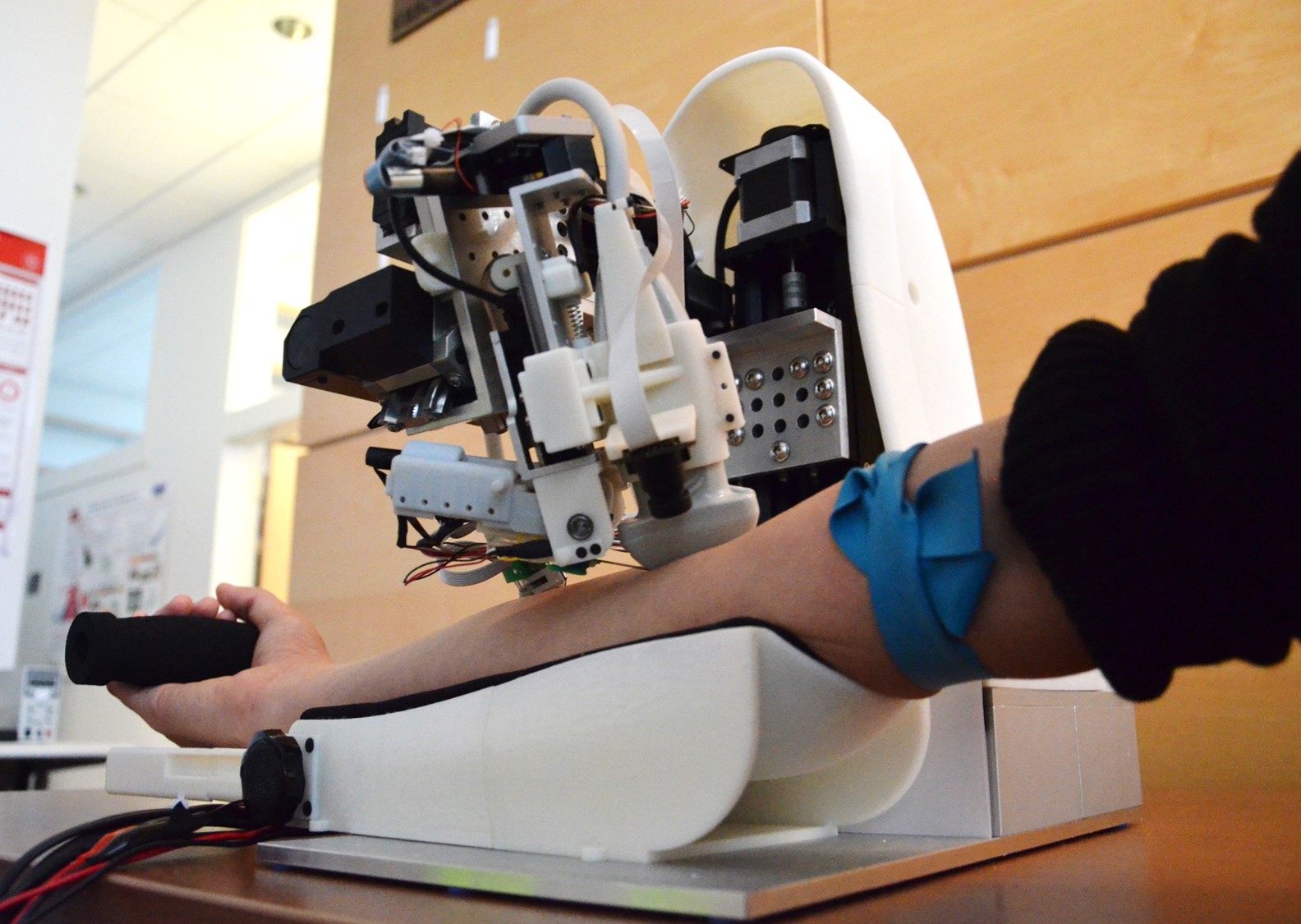
Robot Uses Artificial Intelligence and Imaging to Draw Blood
Rutgers engineers have created a tabletop device that combines a robot, artificial intelligence and near-infrared and ultrasound imaging to draw blood or insert catheters to deliver fluids and drugs. Their research results, published in the journal Nature Machine Intelligence, suggest that autonomous systems like the image-guided robotic device could outperform people on some complex medical tasks.
‘Brain Surfing’: Ultrasound waves focused on prefrontal cortex elevate mood and change brain connectivity in human volunteers
A team of researchers at the University of Arizona has found that low-intensity ultrasound waves directed at a particular region of the brain’s prefrontal cortex in healthy subjects can elevate mood, and decrease connectivity in a brain network that has been shown to be hyperactive in psychiatric disorders. The method uses transcranial focused ultrasound (‘tFUS’), a painless, non-invasive technique to modulate brain function comparable to transcranial magnetic stimulation (‘TMS’), and transcranial direct current stimulation (‘tDCS’). This study shows, for the first time, a correlation between tFUS-induced mood enhancement, and reorganization of brain circuits.
Guidelines for Thyroid Surgery Published in Annals of Surgery
The first set of comprehensive, evidence-based clinical guidelines for surgical treatment of thyroid disease – developed by an expert panel assembled by the American Association of Endocrine Surgeons (AAES) – was published today by Annals of Surgery. The journal is published in the Lippincott portfolio by Wolters Kluwer.
In acoustic waves, engineers break reciprocity with ‘spacetime-varying metamaterials’
Working in an emerging field known to as “spacetime-varying metamaterials,” University at Buffalo engineers have demonstrated the ability to break reciprocity in acoustic waves. The NSF-sponsored research could have implications in communications, medicine and other fields.
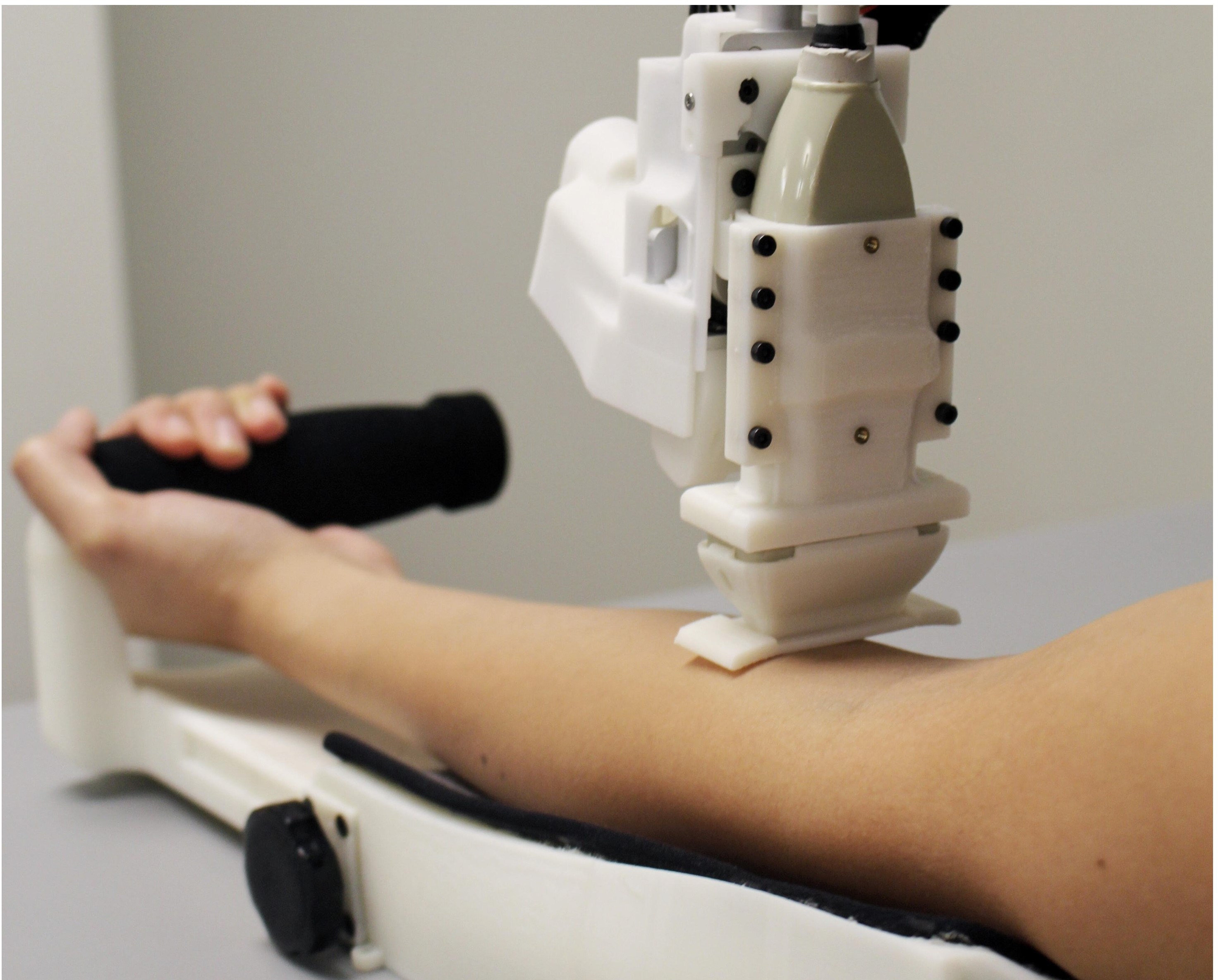
New Robot Does Superior Job Sampling Blood
In the future, robots could take blood samples, benefiting patients and healthcare workers alike. A Rutgers-led team has created a blood-sampling robot that performed as well or better than people, according to the first human clinical trial of an automated blood drawing and testing device.
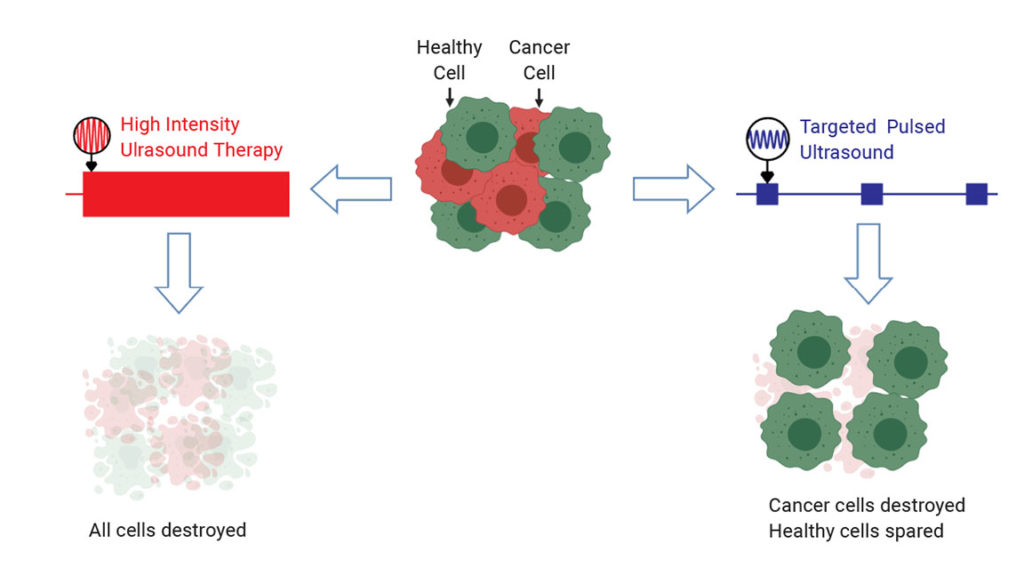
Ultrasound Selectively Damages Cancer Cells When Tuned to Correct Frequencies
Doctors have used focused ultrasound to destroy tumors without invasive surgery for some time. However, the therapeutic ultrasound used in clinics today indiscriminately damages cancer and healthy cells alike. Researchers have now developed a low-intensity ultrasound approach that exploits the properties of tumor cells to target them and provide a safer option. Their findings, reported in Applied Physics Letters, are a new step in oncotripsy, the singling out and killing of cancer cells based on their physical properties.
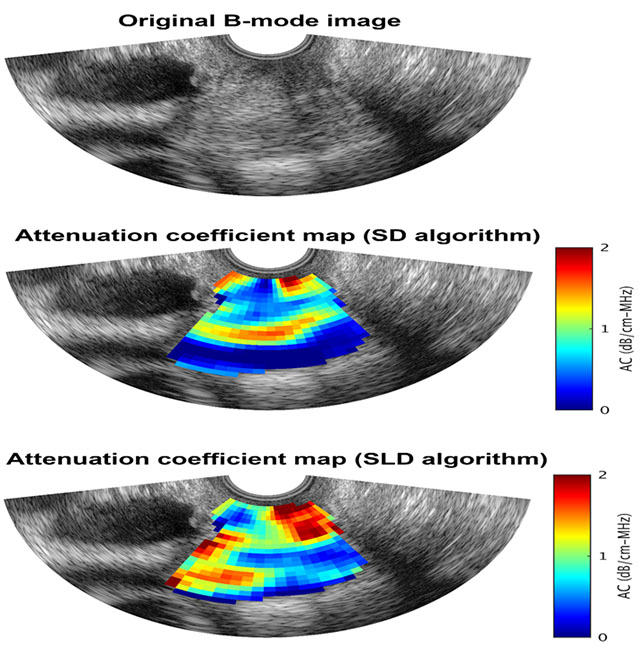
Ultrasound Techniques Give Warning Signs of Preterm Births
Ultrasound can be used to examine cervix tissue and improve diagnostics, which is essential for predicting preterm births, and ultrasound data is used to compare two techniques for evaluating changes in cervical tissue throughout pregnancy. Researchers are looking at ultrasonic attenuation coefficients that can help scientists characterize cervical changes throughout pregnancy and in preparation for birth before other symptoms, such as contractions or dilation, occur. They will discuss their work at the 178th ASA Meeting.
Mayo Clinic radiologists take procedural practice into the future
Looking to the future, radiologists at Mayo Clinic in Rochester saw an opportunity to bring several disparate tools together into a unified space to serve complementary roles in sophisticated, minimally invasive cancer treatments.